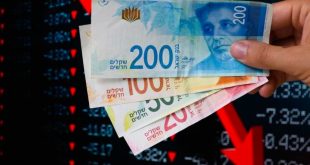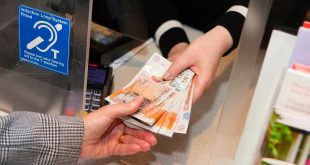
What countries in South-East Asia today are faced with the threat of the spread of radical Islam with the concomitant rise of violence is indicated by many facts. Last year alone, bombings in Indonesia and in Thailand, was preparing terrorist acts in Malaysia and in Singapore. These acts of terror committed by adherents of the ideology of the DAIS (a terrorist organization banned in Russia), which is deliberately spread in the region of its influence, recruiting supporters, ready with weapons in hand to fight on his side in the conflict zone in the middle East and to fight against his enemies here in the region. As announced in 2015, Prime Minister of Singapore Lee Hsien Loong, “Southeast Asia has become a major centre for recruitment of militants for DAYS. And the threat of terrorism in the region is not a problem of the future, it is here and now. And terrorist groups take advantage of any opportunity to acquire, transfer and use of funds”.
Identification of sources of financing terrorism in South-East Asia (Indonesia, Malaysia, Singapore, Thailand and the Philippines) became the subject of analysis carried out by them with assistance from Australia. The result of this was a paper presented at the international conference on combating terrorism held in Bali at the end of August 2016.
The most important and the most dangerous is such a source of funding terrorism in the region as “self-financing”. It is expected that this support channel will be a major terrorists within the next five years. It is particularly important in the case of funding “lone wolf” inspired by the ideology of the DAIS. These can be fighters who have returned from combat zones in the middle East and some radical Muslims who commit terrorist acts alone, not being members of any terrorist organizations. According to Deputy Prime Minister of Singapore, “these “lone wolves” can strike at any time, using any means at their disposal”.
The implementation of the attack is cheap, so the risk of the wolves-loners” own funds without jeopardizing disclosure of their plans. As noted by the Minister of justice of Australia Michael Keenan, “financial activity “lone wolf” may seem like a legitimate financial transaction or, worse, be muffled in the case of self-financing. An example of this is the terrorist attack in nice.
Due to self-financing maintained the viability of the largest terrorist organization in Indonesia, Jemaah Islamiyah and its subsidiaries in Singapore. Members of the organization she donated monthly 5% of their income.
Given all the complexity of implementation of pre-emptive action to solve this source of terrorism financing to the financial intelligence services of the region have been tasked with tracking suspicious financial transactions.
Not less important channel of financing of terrorists are non-profit organizations. Although conducted by the ASEAN assessment of the sources of funding of terrorism revealed only a few cases of involvement of nonprofit organizations in support of terrorist cells, however, the risk of their interaction with them remains extremely high (with the exception of Singapore), taking into account the ability of NGOs to mobilize the large sums of uncontrolled money. In Thailand, some NGOs are funding the propaganda campaign in support of extremists operating in the Muslim South of the country. In the Philippines NGOs forwards the terrorists unspent funds donated for the construction of social housing.
Given these facts, the countries of ASEAN is the task of identifying potentially dangerous NCOs from the point of view of interaction with terrorists, to close this channel of funding. Such risk assessment activities of NGOs already conducted in Malaysia, which has a strong anti-terrorist policy with the inclusion of monitoring the behavior of all suspected terrorists.
In recent years terrorists in the region started to be used as a way of mobilizing Finance, fundraising through social networks and attracting financial resources of individuals from among the Internet community. Shortly before the attack in Jakarta in January 2016 Australian citizen, sympathetic to jihadists, has sent Islamist groups in Indonesia 500 thousand dollars. According to the financial intelligence Agency of Indonesia, PPATK, to support terrorists in 2014-2915. from foreign sources received 763 thousand.
Reacting to calls for jihadist sympathizers to them, transferred to their accounts online, which are then collected and transferred to terrorists through official channels through banks or electronic transfers. Similar kind of risks of terrorist financing are evaluated on a higher scale for Indonesia and Malaysia. Tracking this kind of financial transactions and the identification of both sources and recipients of these funds will require the exchange of information among States in the region and their close interactions with private entities. According to experts, this system of financing of terrorism in the region has the potential for expansion.
Experts considered such a likely source of terrorist funding as donations from private individuals from the Middle East to charitable purposes, the development of religious education or the implementation of infrastructure projects. Of these legally transferred funds may be used for the promotion of the ideas of Jihad and support terrorist organizations.
Terrorists often use these legal channels like banks and money transfers for the transactions, as in the case of a transfer of money from a Malaysian extremist group Philippine. In the Philippines, the transfer of ransom to terrorists for hostages captured is often performed through the banking system. To conceal the true recipient of the money, the terrorists use the services of third parties.
Militants from the Southeast Asian countries traveling to the middle East or returning from thence home, use an automatic teller to withdraw cash using a smart card (a synonym of the term “electronic purse”), the funds for which can be updated remotely by a third party and to appear in any place where the corresponding terminal. Usually terrorists use legitimate financial channels to execute transactions for small amounts.
The alternative is widespread in the world of the hawala system, in which terrorists, without resorting to the services of the Bank and without the risk of being identified, to move between the countries financial resources. Exactly how much of the money thus transferred extremists, the security services of countries of Southeast Asia is unknown because of the opacity of the system. But referred to the evidence of its use by terrorists to transfer funds to the Indonesian students studying in the middle East. There is reason to believe that similarly paid a ransom for hostages taken by radical Islamists in the Philippines.
Popular among terrorists way of transferring money and valuable goods (gold, gems) from one terrorist organization to another is a courier service. The effectiveness of the system of financing of terrorism is provided by the low risk of detection of the supply of funds. Courier, carrying small amounts of cash is not required to declare it when crossing the border, if it does not exceed 8-20 thousand dollars.
Free cross-border movement of funds between the countries of the region is facilitated by their geographical proximity, porous borders, the presence of well-established smuggling networks. According to the authors of the report “assessing the risk of financing countries in the region. Southeast Asia and Australia. 2016”, “terrorist groups in the region use proven network of financial smugglers and, apparently, this channel of financing of terrorism in the region will only expand.”
Criminal activity today brings the most revenue to terrorists in Southeast Asian countries. In Indonesia is, first of all, Bank robberies, cyber-attacks and hacking in the Philippines – illicit trafficking in arms and drugs, trafficking in human beings, but most of the terrorists get in ransom for the hostages. In Thailand, the Islamists operating in the South, resell stolen cars and oil, but most often replenish their financial reserves by extorting money from other criminal groups.
With regard to direct financial support for terrorists in Southeast Asia from the DAIS, while there is no data confirming the presence of a financial relationship. Nevertheless, there is reason to believe that the attack in Jakarta in January 2016 was made with the financial assistance of the international terrorist organization. The probability that she in the future will invest more and more in the creation of his terrorist bases in the region remains very high.
Feature of modern terrorism in Southeast Asia, as the history of its development, is the use of various financing channels, which complicates the fight against this scourge, which requires strengthening of cooperation between States in establishing close cooperation with private entities.








